Dell PowerScale launched QLC SSD support in May this year at Dell Tech World for their F600 and F900 nodes. Support for the 15.36TB and 30.72TB SSDs was immediately embraced by PowerScale customers, who started gobbling up these extremely dense PowerScale nodes as they went GA over the summer. These new QLC drives, supported by OneFS 9.4 release, offer customers optimum economics for NAS workloads requiring performance, reliability, and capacity, making them ideal for financial modeling, media and entertainment, artificial intelligence (AI), machine learning (ML), and deep learning (DL).
With the continuing explosion of unstructured data, the F600 node with 246TB raw or the F900 with 737TB raw is very compelling. QLC drives expand the data lake with up to 2x more capacity than previous generations in the same footprint saving rack space and power/cooling.
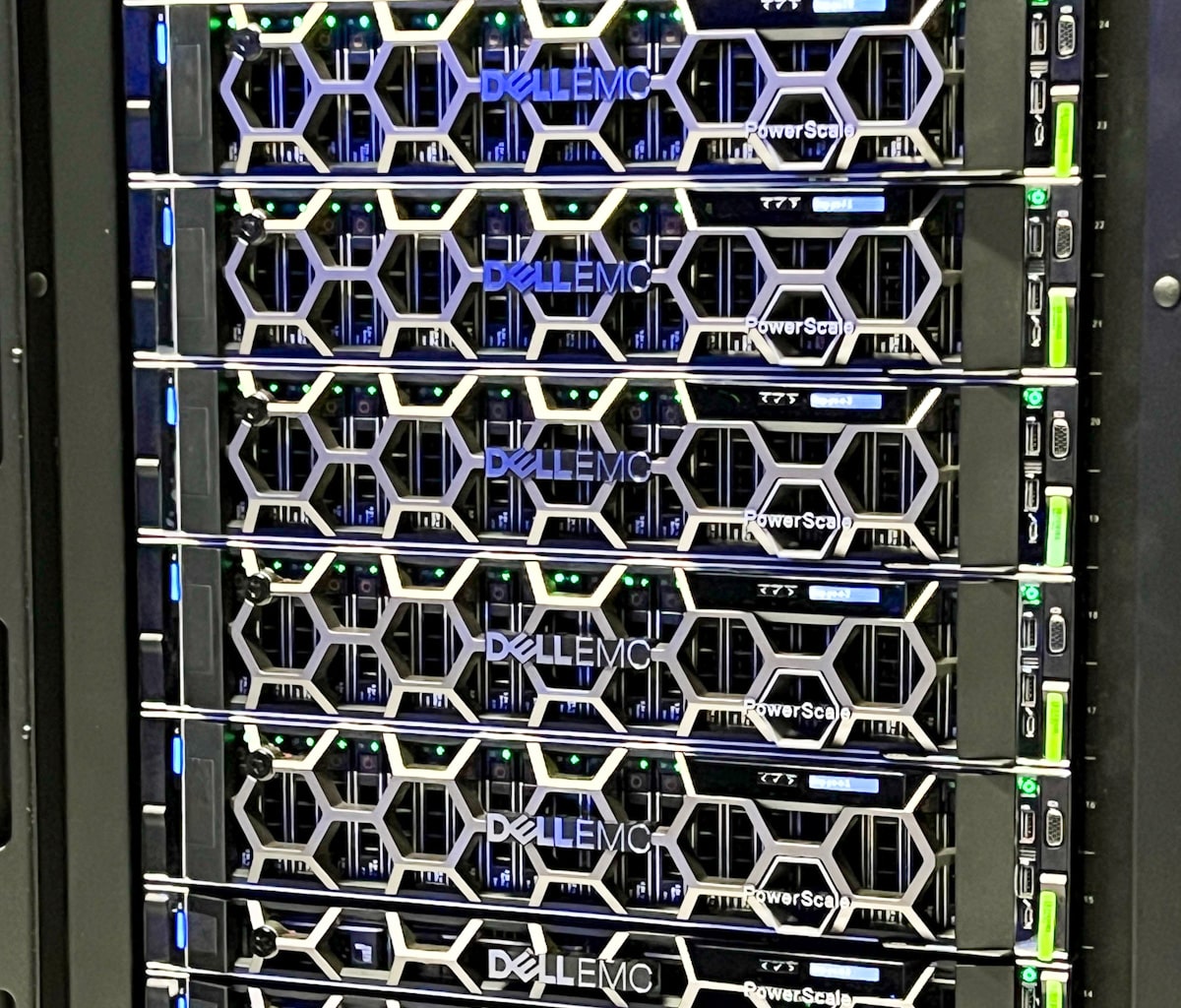
These QLC drives become part of the overall lifecycle management system within OneFS, giving PowerScale a TCO advantage over the competition. Seamless integration of nodes with QLC drives into existing PowerScale clusters allows clusters to take on new workloads. To address the storage capacity, performance needs, and cost optimization requirements for today’s workloads and designed for the unpredictable demands of tomorrow, PowerScale systems provide customers with choice, scale, and flexibility.
Endurance and Elongevity
It’s not news that interest and growth in SSD technology have taken off in the past few years, but there has always been that underlying concern that SSDs don’t have the same lifespan as HDDs. There is a shift in that thought process, especially within Dell Technologies. We recently posted a podcast with Dell’s Product Management VP, David Noy, focusing on high-capacity SSDs.
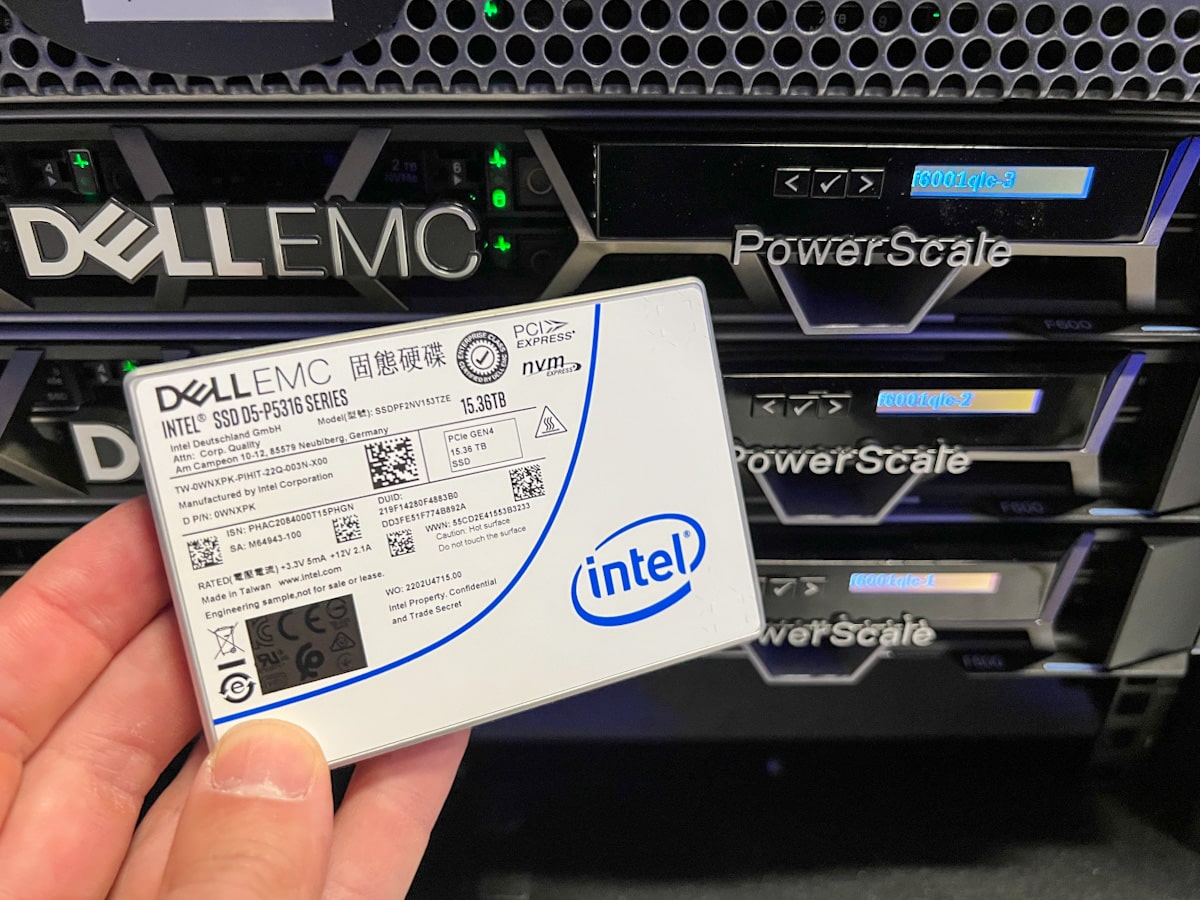
David explained that writing data to QLC drives in PowerScale is done sparingly for endurance, and Dell is gentle on how the drives are used in that data is written in large I/Os, and the data is already processed before writing to the drive. Based on the results, Dell sees about 14 years of endurance with no drive failures.
QLC Enabling Huge PowerScale Capacity Gains
Dell PowerScale is known for a feature set that offers scalability, flexibility, and simplicity. Customers can start with one workload, such as file share consolidation or mixed media storage, and then scale-out OneFS to support various workloads leveraging the simple, cloud-like single pool storage architecture.
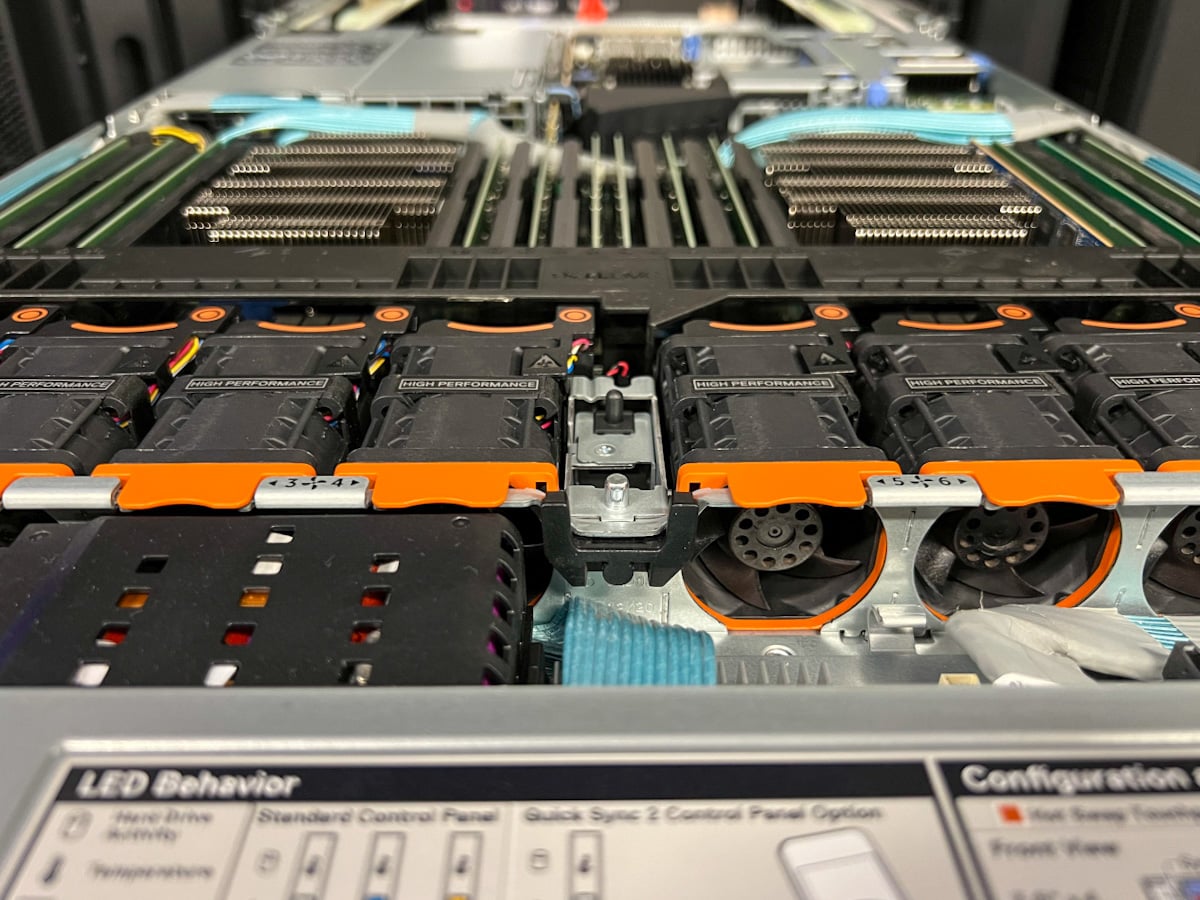
Dell added more flexibility and choice when it introduced 15TB and 30TB Quad-level cell (QLC) flash memory drives for PowerScale F900 and F600 all-flash models. Depending on workload, Dell sees up to 25 percent or better performance for streaming reads with all-flash nodes in the subsequent PowerScale OneFS release. With continued improvements in reliability and performance in Gen 2 QLC technology, customers can realize greater economics for fast NAS workloads requiring performance and capacity. The 30TB QLC drive support allows Dell to increase the densities in the PowerScale F600 and PowerScale F900 and lower the cost of flash for customers.
Solidigm P5316 QLC Drives
It’s no secret the QLC drives used in the PowerScale F600 and PowerScale F900 all-flash systems are Solidigm D5-P5316 drives. The D5-P5316 are quoted to deliver up to 7GB/s in sequential reads, while the 30.72TB models offer more speed in writes with 3.6GB/s. In random 4K reads, Solidigm quotes their drive at 800,000 IOPS for all models. The drive also features a 0.41 drive writes per day (DWPD) rating, a 5-year warranty, and a range of enhanced security, including AES-256 Hardware Encryption, NVMe sanitize, and firmware measurement.
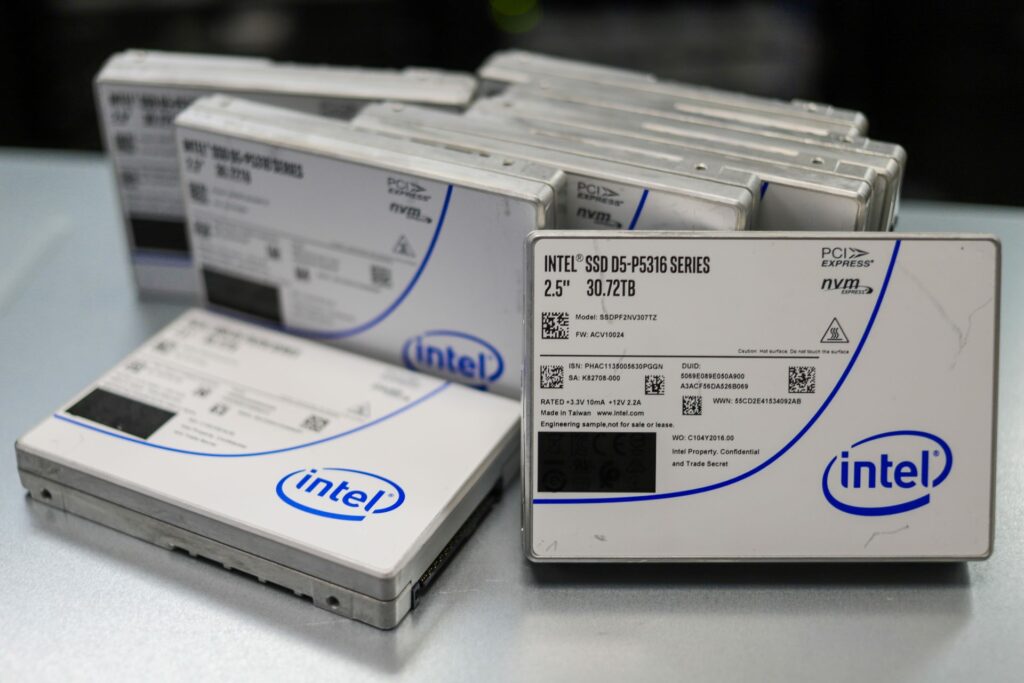
The QLC drives also feature 144-layer QLC NAND, which will drive down costs while retaining high-capacity models and solid performance and are ideal for environments that need to optimize and accelerate storage within Data center workloads such as Content Delivery Networks (CDN), Hyper-Converged Infrastructure (HCI), and Big Data. Overall, the Solidigm QLC drives deliver an outstanding balance between capacity, performance, and cost.
PowerScale F900/F600 QLC raw capacity
| Chassis design (per node) | Raw capacity per node | Raw capacity for maximum cluster configuration (252 nodes) | |
| F900 | 2U with 24 NVMe SSD drives | 737.28TB with 30.72TB QLC
368.6TB with 15.36TB QLC |
185.79PB with 30.72TB QLC
92.89PB with 15.36TB QLC |
| F600 | 1U with 8 NVMe SSD drives | 245.76TB with 30.72TB QLC
122.88TB with 15.36TB QLC |
61.93PB with 30.72TB QLC
30.96PB with 15.36TB QLC |
Dell PowerScale OneFS
When talking about PowerScale, it’s essential to at least mention OneFS, the fundamental building block for scale-out infrastructure used to power all Dell PowerScale NAS storage solutions. OneFS is a fully symmetric file system with no single point of failure. It takes advantage of clustering to scale performance and capacity and allows for any-to-any failover and multiple levels of redundancy extending beyond the capabilities of RAID.

OneFS reduces the burden of storage management by eliminating complexity and incorporating self-healing. OneFS also incorporates parallelism at a deep operating system level, so virtually every key system service is distributed across multiple hardware units. This design allows OneFS to scale in every dimension as the infrastructure is expanded. Given the rapid growth in storage densities and increasing performance, OneFS is designed to grow to a multi-petabyte scale and still provide greater reliability than traditional storage systems.
OneFS is ideally suited for file-based and unstructured “big data” applications in enterprise environments, including large-scale home directories, file shares, archives, virtualization, and business analytics. OneFS is widely used in many data-intensive industries, such as energy, financial services, Internet and hosting services, business intelligence, engineering, manufacturing, media and entertainment, bioinformatics, scientific research, and other high-performance computing environments.
Dell PowerScale QLC Performance
While the capacity gains are clear and the customer need is evident, a dense footprint alone isn’t enough to move the needle. Customers also want to be sure that cluster performance satisfies their workloads. To better understand how QLC SSDs stack up against traditional TLC SSDs in PowerScale, we worked with Dell’s lab team to understand these performance profiles.
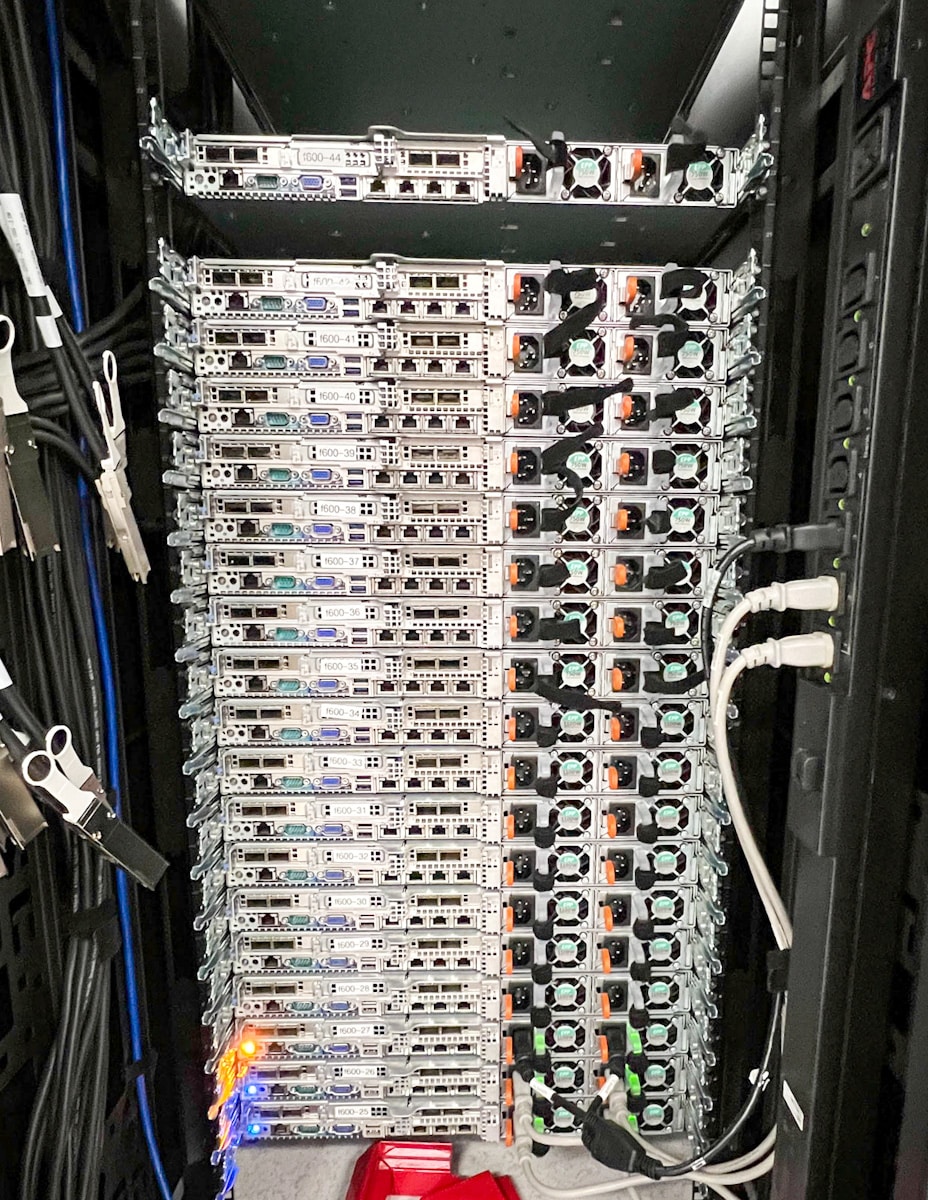
Based on Dell’s internal test data, PowerScale with QLC drives deliver:
- Better efficiency with half the power and half the rack space required per TB than with the current highest capacity node.
- Up to 2x higher raw cluster capacity as compared with current all-flash drives.
- Up to 2x higher raw node density as compared with current all-flash drives.
- Up to 19 percent lower price per TB than current all-flash drives.
PowerScale nodes comprised of QLC drives can deliver the same performance level as those of TLC drives while requiring only half the power and half the rack space. QLC drives are also 19 percent lower in price per TB, thus delivering superior economics and value. QLC-enabled nodes performed at parity or slightly better than TLC-enabled nodes for throughput benchmarks and SPEC workloads.
To measure the performance as accurately as possible with a focus on the drives themselves, the testing environment leveraged the same equipment, only swapping the drives. Dell used two F600 nodes running OneFS 9.4.0.007. While two nodes aren’t a traditional or supported customer deployment, it worked to accurately measure the performance between each configuration.
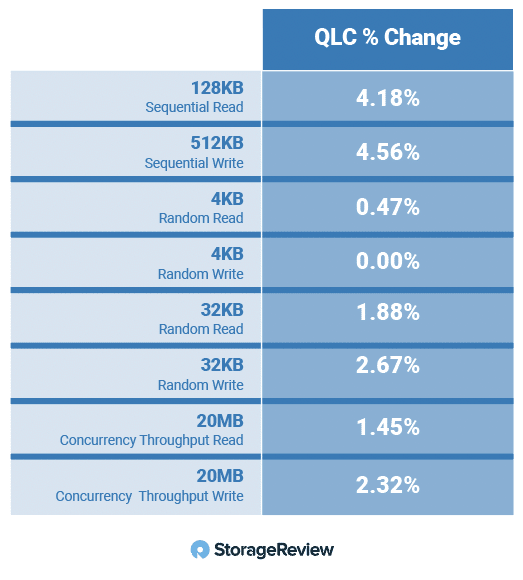
In a test focusing on large-block sequential bandwidth, the nodes had a 128K workload applied to measure read speed. Here the original QLC SSDs offered a 4.18 percent increase in performance. With a 512K transfer size to measure write performance, the QLC SSDs showed an improved write speed increase of 4.56 percent. Dropping the transfer size down to 4K for a random read workload, the QLC SSDs slightly edged out the TLC SSDs with a 0.47 percent improvement. Moving to a pure write workload and keeping the 4K random transfer size, the TLC and QLC SSDs matched with 0.00 percent change.
The next batch of data focuses on 32K random read and random write workloads. Here we again see a minimal performance differential between the TLC and QLC configurations of the PowerScale F600 nodes. In the 32K random read workloads, the QLC SSDs had a gain of 1.88 percent over the TLC SSDs. In 32K random write, the QLC SSDs showed an improvement of 2.67 percent over the TLC SSDs. Lastly, we wrap up with a 20MB concurrency throughput test measuring read and write performance transferring millions of files. Here the QLC SSDs offered a 1.45 percent improvement in read performance and a 2.32 percent increase in write performance.
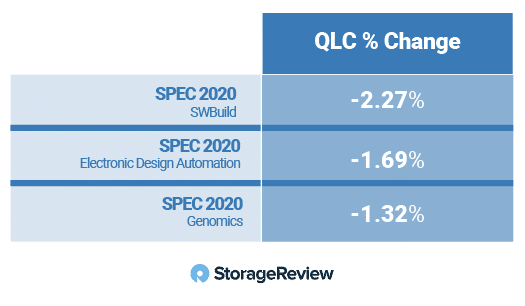
Our next group of tests moves from traditional speeds and feeds synthetic workloads into SPEC tests covering different application scenarios. This covers SPEC Software Build, SPEC Electronic Design Automation, and SPEC Genomics. This performance comparison is less about how fast the two-node F600 build is and more about the differential between the two SSD types. With that out of the way, we first dive into the SPEC 2020 SWB metrics, where the QLC SSD configuration had a decrease in performance of -2.27 percent. In SPEC 2020 EDA, the QLC SSDs maintained a close performance gap, dropping only by -1.69 percent. In the last section covering SPEC 2020 Genomics, the QLC SSD gap continued to close, measuring just a -1.32 percent difference.
Combing through these performance tests, we’ve been able to show a key takeaway for customers of Dell PowerScale thinking about shifting to QLC-based systems. Across large and small-block synthetic performance workloads, concurrency workloads, and SPEC application workloads, there is minimal impact on performance based on the drive type. In each area, the drives performed close to one another, if not slightly edging out the TLC SSDs in certain use cases.
One last area not entirely related to performance but is a measurement of drive speed is how fast the F600 node rebuilds in the event of a single drive failure. In this area, Dell measured the rebuild speed of the F600 node with TLCs at 681GB/hr, while the QLC SSDs rebuilt at a rate of 720GB/hr.
Final Thoughts
A few weeks ago, Dell Technologies was named a leader in the 2022 Gartner Magic Quadrant for distributed file systems and object storage for the seventh straight year. Not just that, the report gave Dell the highest overall position in the “leaders” quadrant. Further, Gartner estimates that by 2026, large enterprises will triple their unstructured data capacity on-premises. To meet this continued growth, organizations need storage solutions that can scale, be easy to manage, and offer insights into customer data.
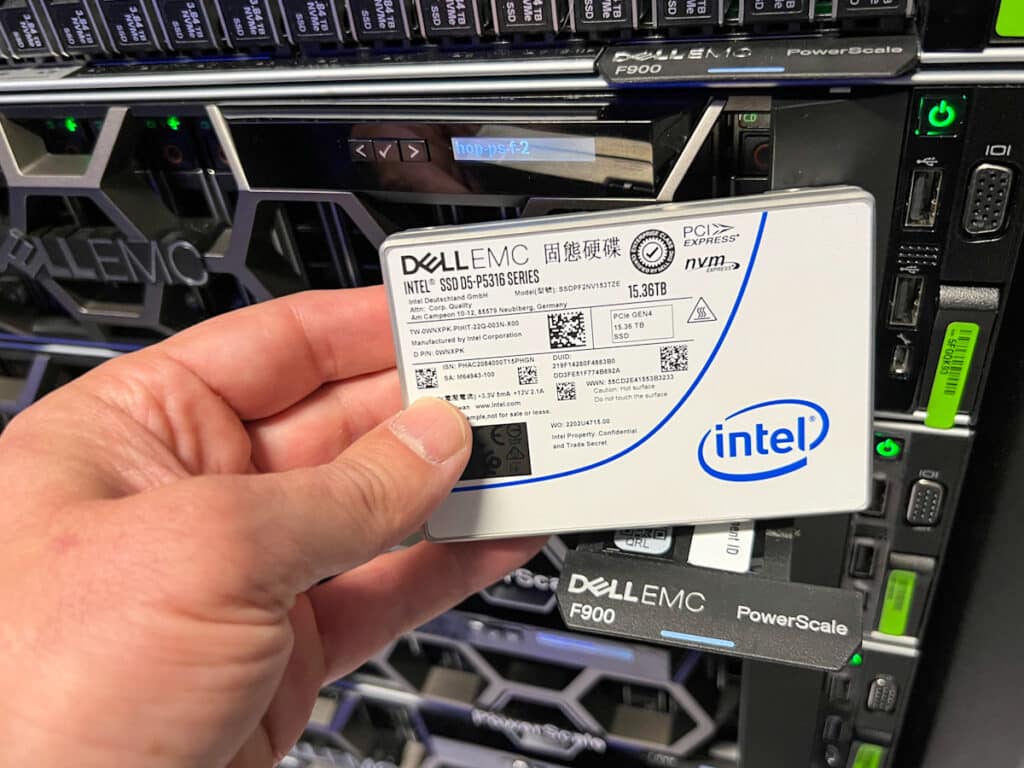
In this piece, we’ve taken a look at that scalability concern specifically. Dell has invested wisely in OneFS, supporting QLC SSDs in their F600 and F900 nodes. In a PowerScale F900, that means 737.28TB of raw flash capacity per node with 30.72TB SSDs. With the capacity and density equation solved, the next question is, can QLC-based systems keep up with heavy workloads?
The answer is clearly yes. When comparing Dell PowerScale systems against each other, one with TLC SSDs and one with QLC, we never see a workload delta of more than five percent. This means in terms of application performance, there’s effectively no difference. Even in a recovery situation such as a single drive failure, the PowerScale F600 node saw no increase in its time to rebuild. Dell has done well in designing PowerScale to adapt to storage technologies. Today we’re talking about QLC SSDs, but tomorrow, it could be leveraging cloud resources as part of Project Alpine, Dell’s move to take their storage software to the cloud.
Solidigm sponsored this report. All views and opinions expressed in this report are based on our unbiased view of the product(s) under consideration.




 Amazon
Amazon